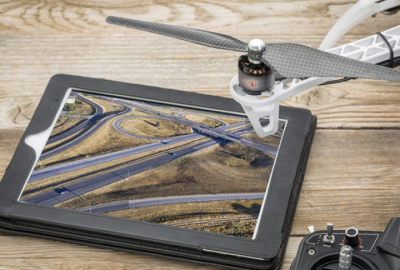
You are using a drone to inspect infrastructure; e.g., power lines, rail tracks, wind turbines. Often infrastructure can be in a difficult to reach area and a drone, fitted with a high-definition video camera, provides safe access. Sometimes around this infrastructure human life is found: dwellings, farms, people going about their life. Images of this can be captured and included in the footage that is used by you.
Below you will see some of the main privacy and data protection issues that could arise in this situation and tips/ safeguards for how to avoid them. Keep in mind the detailed information provided in the Handbook.
Privacy and Data Protection
-
PRIVACY
Visibility and accountability: Individuals on the ground may
not know a drone is in operation. They should be aware who, when and how the
drone is being used and for what purpose. This allows them to adjust their
privacy expectations, be prepared and keep control over their privacy by
acting accordingly.Chilling effect: Individuals may perform a form of
self-preservation/ self- censorship by restricting their behaviour when they
are, or believe that they are, being watched. Making individuals in the area
aware of the purpose of filming and what is being captured can reduce this
negative effect.Capturing continuous footage and private spaces: As you fly
your drone, you may capture people living in the area moving about. This could
threaten their right to privacy of location and space. People have a right to
move about freely without being tracked and monitored and to be left alone in
their own home. The sphere of the home (including the garden, the car and, for
example, the driveway) is a place where individuals have a right to privacy. -
DATA PROTECTION
Remember that there are special requirements that apply whenever people
whose information or images you collected can be identified (making it their
personal data). Keep in mind that sometimes it may be possible to identify
people also from the context – location, house numbers, car registration
numbers, time of day, etc.Inform people: Whenever you collect someone’s personal data
or plan to do so, you should inform them of a variety of aspects regarding
your activity, including who you are, what you are doing and why, what you
will use their data for, how long you will keep the data for and what rights
they have.Reason for data collection: You should have a good reason to
collect personal data, even if that is accidental. In this case, the reason
would be a legitimate interest you are pursuing. You are carrying out an
activity of social importance – you are inspecting important infrastructure.
Data minimisation: You should collect as little personal
data as possible. This means you should only collect data if lt is linked to
your purpose or it is unavoidable.Purpose limitation: People have the right to know exactly
for what purpose their data is collected and, once you inform them of the
reason (inspection of the infrastructure), you cannot use their data for a
different incompatible purpose (e.g. advertising) without informing them again
and (1) asking them for their consent or (2) seeking another lawful reason for
your actions (see above).Integrity and confidentiality: Store any personal data in a
secure and protected manner. Unauthorised access or data corruption must be
prevented.Storage limitation: You should not keep the footage of
people in a manner that would allow their identification for longer than
necessary for your planned purpose.Feel free to keep the footage of the infrastructure for your records, as long
as there are no identifiable people caught in it. -
SAFEGUARDS
TIPS - If you think someone has a reasonable expectation
of privacy, don’t violate that privacy by taking pictures, video, or
otherwise gathering personal data on them, especially if they are in a
private space.TIPS - Engage in a public information campaign. Consider
the use of advertisements, signs, leaflets and social media announcements
that provide information about what the drone is doing, when it will be
operating, what it may record, and what the footage will be used for. Don’t
forget to include your contact information as well, so individuals could
turn to you if they have any questions or requests. If someone does not wish
to be filmed, you should comply with their wish.TIPS - Collect only the minimum amount of information
about people necessary for the purpose of your drone operation and only
store it when and as long as it is relevant to your task. Consider flying at
a higher altitude to ensure less focused data relating people on the ground
is collected. This would make the identification of individuals more
difficult and could contribute to minimising the impact of our activities on
their privacy. Don’t forget to observe the maximum allowed flight
altitudes.This can make the identification of individuals more difficult and can help
minimise the impact of your activities on their privacy.TIPS - Do not share data on identifiable persons with
third parties without the agreement of the people in the images or without a
legal obligation requiring you to do so.TIPS - Store any personal data collected in a secure
manner, and ensure that it is not stored for excessive lengths of time, i.e.
for longer than necessary.TIPS – Minimise personal data: Consider taking
anonymising steps whenever and as soon as possible, such as blurring, to
minimise the amount of personal data collected. E.g., blur the images of
people inadvertently caught on the footage, as well as all house numbers and
car registration and plate numbers. Delete data which you no longer
need.